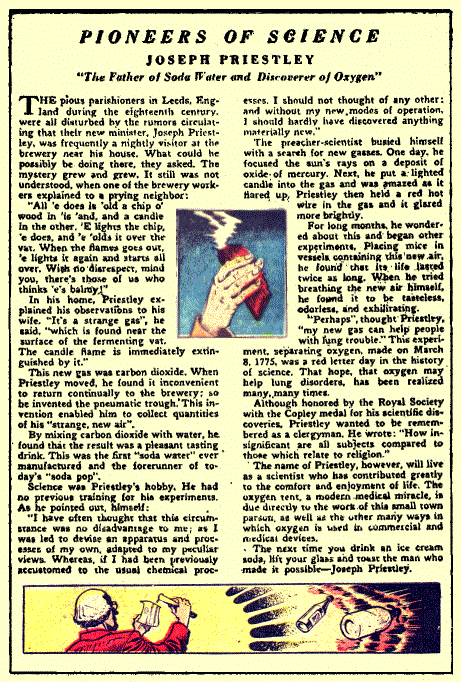|
Classics Illustrated (1941 Series), Number 31, HRN 51, first published October, 1946, HRN 51, about 1948,
page 48.
©Gilberton Co.
"The Black Arrow" by Robert Louis Stevenson
Cover:?
Editor: ?
Penciller: Henry Kiefer or Alex Blum?
Inks: ?
Letterer: ?
Colorist: ?
Albert L. Kanter was the first publisher to recognize the comic-book medium as a new way to introduce children to the great classics
of literature. The publication of Classic Comics 1, a 64-page adaptation of Alexandre Dumas' The Three Musketeers in October 1941, began one of the most successful experiments in the comic-book industry. The series struggled for several years with irregular schedules and numerous printers. The page count was reduced to 56 with number 13, and again to 48 with number 45, which became the new standard. The Jerry Iger Shop began producing Classic Comics beginning with number 23 in 1945. The title changed to Classics Illustrated with number 35. Most of the artwork was created by Henry Kiefer and Alex Blum in the early days, and one of them probably drew this book. In 1951, Classics
Illustrated introduced painted rather than line-drawn covers, and moved to the major national distributor Curtis. Curtis's price hike from 10 to 15 cents did not slow the growth of the series because of its marketing as books, not comics. The respectability of the series also helped it survive the comic-book witch-hunts of the 1950s while many other publishers were forced to fold. There was never any need for the series to seek the imprimatur of the Comics Code Authority seal. The production of new titles ceased in 1962 with number 167, Faust.
The demise of the series was due to a combination of the loss of Gilberton's second-class mailing permit and external factors such as television, cheap paperback books, and Cliff's notes. Foreign publication continued, and
several US revivals have been attempted, most notably First Publishing's 1990 series.
Classics Illustrated comic books have been issued in reprints since 1943. Changes in book length, covers and interior artwork have led to a bewildering number of variations. In all, there are nearly 1400 different editions of the US series alone! Editions are most reliably distinguished by the highest reorder number (HRN) in the list usually found on an inside cover. Writers and artists are usually uncredited and frequently unknown.
Early Classics Illustrated comics included educational, illustrated text pages such as the last page of Classics Illustrated 31 shown here. This Pioneers in Science feature presents a brief biography of Joseph Priestley, the discoverer of oxygen. The page does not particularly write down to its audience. In fact, the page would make a suitable sidebar feature in a contemporary chemistry textbook! The illustration showing soda bottles flying through the air away from experimenting Priestley provides an amusing touch.
[Information about the history of Classics Illustrated was adapted from "Understanding Classics Illustrated" by Dan Malan in The
Overstreet Comic Book Price Guide (23rd Edition), by Robert M. Overstreet, Avon Books (1993).]
|


